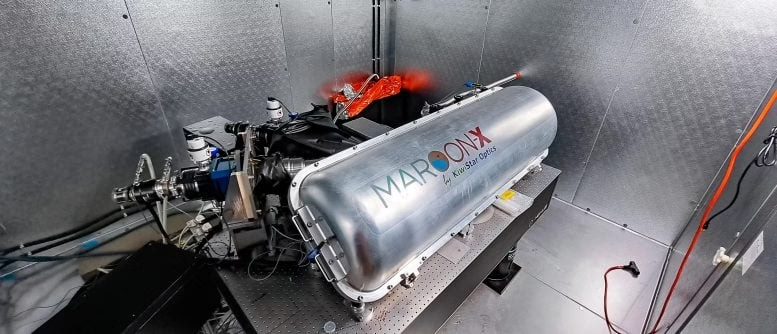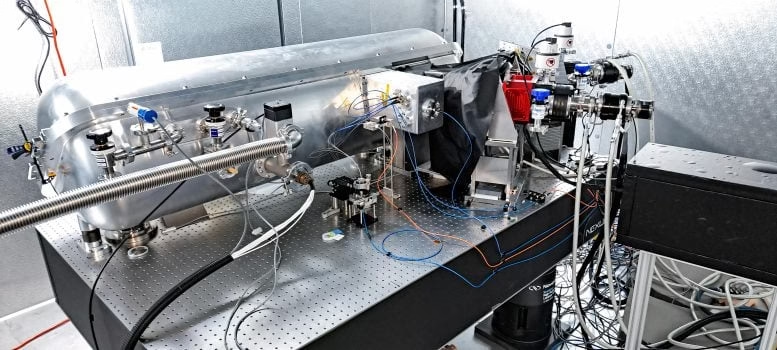Astronomers Unveil Four Small Planets Orbiting Barnard’s Star After a Century-Long Quest
In a groundbreaking astronomical breakthrough, scientists have confirmed the existence of not one, but four small planets orbiting Barnard’s Star, a nearby cosmic neighbor just six light-years from Earth. This discovery, announced on March 11, 2025, in *The Astrophysical Journal Letters*, represents a monumental milestone in the search for exoplanets, particularly those of smaller sizes. These newly identified worlds, each roughly a fifth to a third of Earth’s mass, zip around their host star in mere days, placing them far too close and hot to sustain life as we know it. Nevertheless, their detection showcases the remarkable advancements in modern astronomical technology and opens a new chapter in our understanding of planetary systems beyond our own.
A Stellar Neighbor Under the Spotlight
Barnard’s Star, the second-closest star system to our Sun, has long captivated astronomers. Discovered in 1916 by E. E. Barnard at Yerkes Observatory, this solitary M dwarf star stands out due to its proximity and its similarity to our Sun in having a single-star configuration—unlike the triple-star system of Proxima Centauri, the closest stellar neighbor. M dwarfs like Barnard’s Star are the most abundant stars in the universe, making them prime targets for studying planetary formation and diversity. For over 100 years, researchers have scoured this system for signs of orbiting worlds, driven by the tantalizing possibility that such a nearby star could reveal secrets about the cosmos.
The four newfound planets, though inhospitable, mark a significant leap forward. “Barnard’s Star is practically in our cosmic backyard, but it’s remained largely mysterious,” Ritvik Basant, a Ph.D. candidate at the University of Chicago and the study’s lead author, said of the discovery, which is extremely exciting.“It’s a testament to how far our instruments have come, offering precision that past generations could only dream of.”
The Challenge of Spotting Tiny Worlds
Detecting planets around Barnard’s Star has proven no easy feat. These distant worlds are far too small and faint to be seen directly, overshadowed by the blinding brilliance of their host star, even with the most powerful telescopes available. To overcome this hurdle, astronomers have turned to indirect methods, relying on the subtle effects these planets exert on their star. One such technique, employed in this discovery, involves tracking the star’s “wobble”—a slight back-and-forth motion caused by the gravitational pull of orbiting planets.
Leading this effort was University of Chicago Professor Jacob Bean, whose team developed MAROON-X, a cutting-edge instrument mounted on the Gemini Telescope atop a Hawaiian peak. Designed specifically for exoplanet hunting, MAROON-X measures minute shifts in the star’s light spectrum with extraordinary accuracy. These shifts, caused by the gravitational tug of orbiting planets, reveal not only their presence but also their approximate masses and orbital periods. After analyzing data collected over 112 nights across three years, Bean’s team confirmed the existence of three planets. When combined with findings from a separate study using the ESPRESSO instrument on the Very Large Telescope in Chile, evidence emerged for a fourth planet, solidifying the discovery.

What Are These Planets Like?
Unlike the gas giants like Jupiter that dominate many exoplanet discoveries, these four worlds are likely rocky, akin to Earth or Mars. However, confirming their composition remains challenging. From our vantage point, these planets don’t transit—or pass in front of—their star, a method typically used to determine whether a planet is rocky or gaseous. Instead, scientists rely on statistical comparisons with similar planets around other stars to infer their nature. While their exact makeup remains uncertain, the team confidently ruled out the presence of additional planets in Barnard’s Star’s habitable zone—the region where conditions might support liquid water and, potentially, life.
Each planet orbits Barnard’s Star at breakneck speeds, completing a full revolution in just a few days due to their proximity. This closeness renders them scorching hot, far beyond the temperature range suitable for habitability. Yet, their small size—ranging from 20% to 30% of Earth’s mass—makes them some of the tiniest exoplanets ever detected using this method, underscoring the precision of modern tools like MAROON-X and ESPRESSO.
A Century of Pursuit Pays Off
Barnard’s Star has long been dubbed the “great white whale” of exoplanet hunting. Over the past century, multiple claims of planetary discoveries around this star have surfaced, only to be debunked upon closer scrutiny. This time, however, the evidence is robust, backed by two independent studies using different instruments and observation schedules. “We observed at different times, from different locations—Chile and Hawaii—with no coordination between teams,” Basant explained. “That independence gives us strong confidence these signals are real, not artifacts in the data.”
The findings build on earlier research, including a prior study that hinted at one planet with possible traces of others. The latest confirmation, achieved through rigorous calibration and cross-verification, marks the most reliable detection yet, ending a 100-year quest with a resounding success.
A New Era of Exoplanet Discovery
This breakthrough heralds an exciting future for astronomy. The ability to detect such small planets—among the tiniest identified with the radial velocity method—signals a shift toward uncovering a broader range of planetary types. While most known rocky exoplanets are larger than Earth and share similar traits across the galaxy, smaller worlds like those at Barnard’s Star may exhibit greater diversity in composition. As more are discovered, scientists hope to unravel the processes behind planet formation and identify factors that make some worlds habitable.
“The thrill of this find was palpable,” Bean reflected. “We pored over the data intensely in late December, and it consumed my thoughts. Suddenly, we held a secret about the universe no one else knew. Sharing it was exhilarating.” For Bean, the discovery transcends incremental progress. “Much of our work builds slowly, but this? This is something humanity might remember forever. That sense of wonder is what drives us.”
Why This Matters for Science and SEO
For researchers and space enthusiasts alike, the unveiling of four planets at Barnard’s Star is a triumph of perseverance and innovation. It showcases how advanced tools like MAROON-X and ESPRESSO are revolutionizing exoplanet detection, paving the way for future discoveries. For those searching online, terms like “Barnard’s Star planets,” “smallest exoplanets,” and “M dwarf star systems” will likely trend, making this a hot topic for astronomy-related content.

Looking Ahead
As technology continues to evolve, astronomers anticipate finding even more planets around stars like Barnard’s Star. Each discovery brings us closer to answering fundamental questions: How common are Earth-like worlds? What conditions foster life? For now, the four planets of Barnard’s Star stand as a testament to human curiosity and ingenuity—a small but mighty step into the vast unknown of our universe.
read more news HERE
